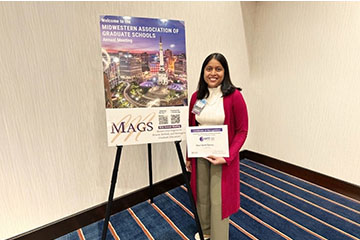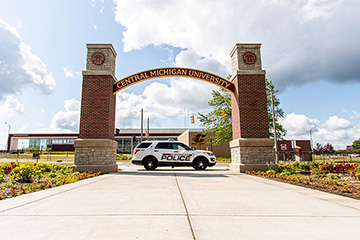Grad student out for blood when studying coagulation process
Kaitlyn Whitefoot-Keliin, a graduate student, studied extracellular vesicles and their effect on blood coagulation after exposure to bacteria.
Kaitlyn Whitefoot-Keliin, a graduate student studying biochemistry, studied neutrophils (one of the types of white blood cells), which, when mixed with bacteria, release extracellular vesicles (EVs; a class of particles often used in transport inside and outside of cells); the EVs then interact with DNA and contribute to blood clotting (coagulation). Whitefoot-Keliin showed that the improved coagulation was dependent upon the interaction of the DNA and the EVs, as clotting was less effective if either the DNA or the EVs were absent.
Her research was conducted by separating neutrophils from blood and mixing them with bacteria, specifically S. aureus, S. epidermidis, E. coli, or P. aeruginosa. Then, the EVs which were produced were isolated using centrifuges. After isolation, the EVs were treated with and without an enzyme that degrades DNA, allowing her to examine EVs with DNA, EVs with no DNA, and DNA without EVs. The coagulation ability of the EV-DNA was measured by adding EVs to human plasma. Whitefoot-Keliin's work has the potential to correct improper coagulation, a frequent complication of bacterial infections.
The project won the biology department’s Two Minute Research Talk competition in April 2022. Whitefoot-Keliin was also selected to present her work at the Gordon Research Seminar on Extracellular Vesicles in July 2022. Whitefoot-Keliin's interest in biology developed at a young age. She attributes going into microbiology to reading Ed Yong’s book, “I Contain Multitudes: The Microbes Within Us and a Grander View of Life”.
This story is brought to you by the Office of Research and Graduate Studies.




